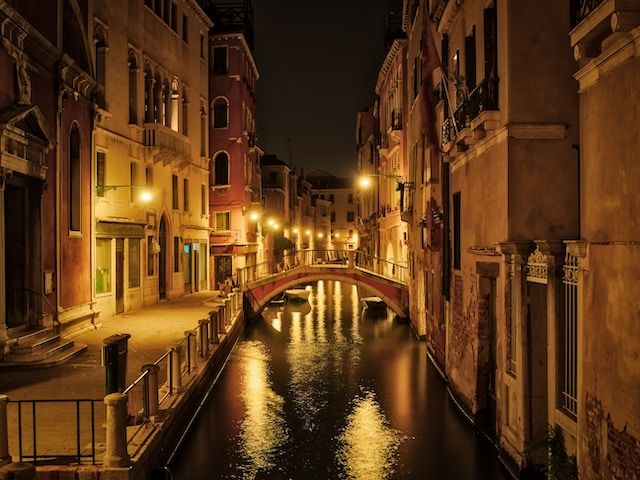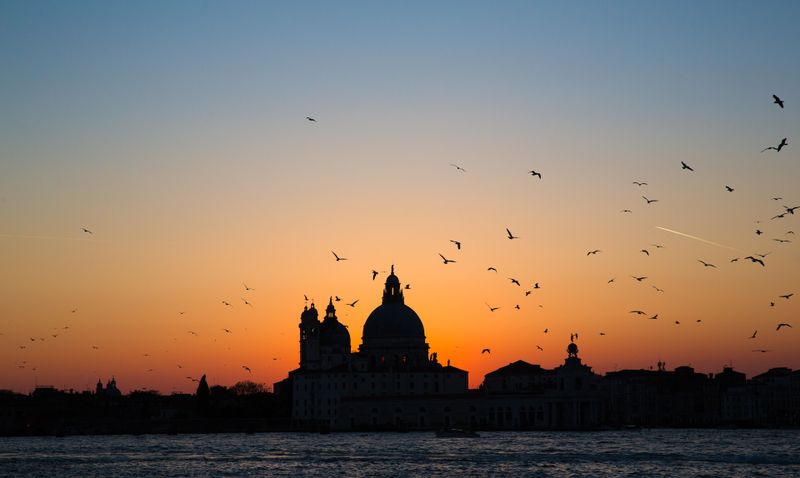Venice, a unique city in the world, stands on a myriad of islands in the picturesque Venetian lagoon.
Its history is shrouded in an aura of mystery and fascination, captivating millions of visitors each year with its rich cultural and architectural heritage.
But how was this extraordinary city born, and what are the key events that have shaped its destiny over the centuries?
When venice was born?
Birth of Venice

Venice, the city of waters, gondolas and historic palaces, is a place that enchants and fascinates millions of visitors every year.
But how was this extraordinary city, located on a myriad of islands in the middle of the Venetian lagoon, born?
To fully understand the origin and development of Venice, we must take a journey back in time to its humble beginnings and the roots of its greatness.
The ancient origins:
The history of Venice has its roots in the era of the Roman Empire.
In the 4th century AD, Italy was plagued by barbarian invasions that threatened the safety of coastal cities.
Venetian lagoon
It was in this context that inland populations fled to the islands of the Venetian lagoon, seeking protection from enemy incursions.
However, the origins of Venice are older than commonly thought.
Recently
Recently, archaeologists have discovered traces of human settlements dating back to the Bronze Age, proving that the Venetian lagoon was inhabited since ancient times.
These discoveries shed new light on the evolution of Venice and its relationship with its surroundings.
Legend
According to legend, the first inhabited core of Venice was formed on the island of Rialto, where the first communities of fishermen and farmers settled.
Strategic location
This strategic location soon became an important commercial center due to its favorable position along the trade routes between the East and the West.
When venice was born: The founding of Venice
Tradition has it that the founding of Venice officially occurred on March 25 in the year 421 AD, when the first Doge, or head of the Republic, was elected.
However, it is important to note that the process of the formation of Venice was gradual and complex, with different communities settling on the islands of the lagoon over the centuries.
Significant
One of the first significant settlements was Rivoalto, the ancient name for Rialto, which soon became an important trading center due to its strategic location along the trade routes between the East and the West.
In time, other islands were populated and connected by canals and bridges, creating what we know today as Venice.
The golden age of the Venetian Republic:
Venice flourished during the Middle Ages and Renaissance, becoming one of the most powerful and wealthy Maritime Republics in the Mediterranean.
Expansion
Its expansion was driven by its naval fleet and its skill in maritime trade, which enabled it to conquer territories along the Adriatic coast and in the East.
Architecture
During this golden age, Venice became an important cultural center, attracting artists, scientists and merchants from all over the world.
The arts and architecture flourished, with the likes of Giovanni Bellini, Titian, and Palladio helping to embellish the city with extraordinary works of art and sumptuous palaces.
The decadence and decline:
However, Venice's apogee did not last forever.
With the advent of new trade routes bypassing the city and the loss of political power following the wars with the Ottoman Empire, Venice began to decline in the 17th century.
Discovery of the Americas
The discovery of the Americas and the rise of European powers such as Spain and Holland further contributed to its decline.
Next few centuries
Over the next few centuries, Venice gradually lost its political and economic influence, becoming a shadow of its former greatness.
However, its beauty and charm remained intact, attracting visitors from all over the world and contributing to its revival as a major tourist center in the 19th and 20th centuries.
Venice in the 21st Century:
Today, Venice faces significant challenges related to the management of mass tourism, water erosion, and climate change.
However, the city remains a symbol of beauty and resilience, with ongoing efforts to preserve its unique heritage and ensure its long-term survival.
Union with Italy:
In 1797, Venice fell under the rule of Napoleon Bonaparte and was subsequently ceded to Austria through the Treaty of Campoformio.
This marked the end of Venetian independence after more than a millennium of autonomous rule.
1866
With Italian unification in 1866, Venice became part of the Kingdom of Italy, emphasizing its role as a cultural and tourist jewel within the country.
1869
The opening of the Suez Canal in 1869 gave a new impetus to the Venetian economy, allowing a greater flow of goods between Europe and the East.
The eternal charm of Venice:
Today, Venice remains one of the most fascinating and romantic places in the world.
Its picturesque canals, majestic squares and historic monuments attract tourists from every corner of the planet.
However, the city is also threatened by problems such as erosion, pollution, and tourist overcrowding.
Venice in the Future:
To preserve its unique heritage and ensure its long-term survival, Venice faces significant challenges.
Taking sustainable measures to protect the lagoon environment, along with policies to manage tourism responsibly, are crucial to ensuring a prosperous future for the city.
The beauty of Venice:
Venice is not only a city of history and culture, but also of breathtaking beauty.
Its majestic squares, elegant bridges and picturesque canals create a unique environment that continues to inspire artists, poets and travelers of every era.
Venetian culture:
Venice's culture is rich and diverse, with influences ranging from art and music to literature and cuisine.
Biennale
The Venice Biennale, one of the most important contemporary art exhibitions in the world, attracts artists and enthusiasts from all over the world.
Music
Venetian music, with its traditional serenades and performances by Baroque orchestras, continues to enchant listeners with its timeless beauty.
Venetian art:
Venetian art has produced some of the most iconic masterpieces in art history.
Artists such as Titian, Tintoretto, Veronese and Bellini have left an indelible imprint on the city with their extraordinary works, which decorate churches, palaces and museums throughout Venice.
When venice was born
The birth of Venice is a fascinating chapter in human history, a story of survival, ingenuity and beauty.
From humble beginnings on a group of islands in the Venetian lagoon, this extraordinary city grew to become a maritime power and a world-renowned cultural center.
Today
Today, Venice continues to enchant and inspire visitors from around the world with its rich historical heritage and timeless beauty, proving that its appeal will endure for generations to come.
Mystery and legend
The birth of Venice is shrouded in mystery and legend, but its historical and cultural importance is undeniable.
From a modest refugee settlement in ancient times, the city has developed into a maritime power and a world-renowned cultural center.
Conclusion
So, Venice faces modern challenges as it continues to enchant and inspire visitors from around the world with its timeless beauty.
May its charm and grandeur endure for generations to come.

